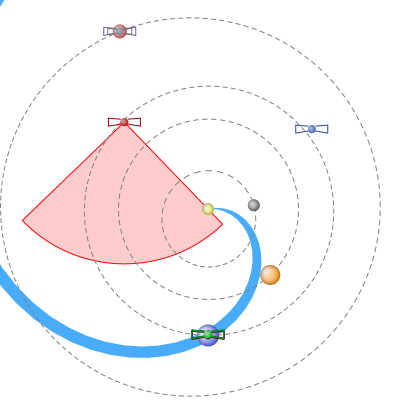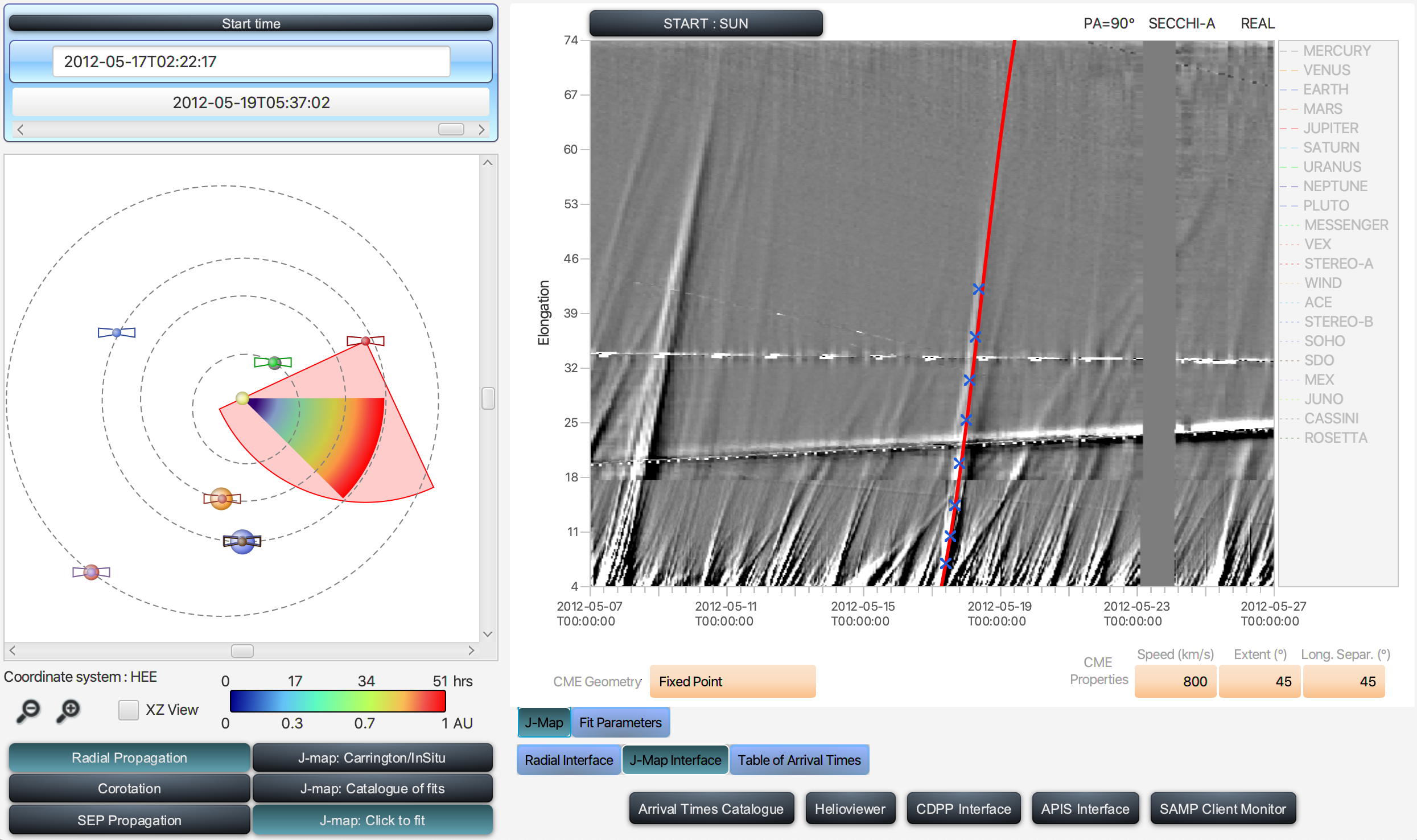
In the STORMS framework, a set of tools is developed and made available to the scientific community and to anyone interested in space and Sun related physics. These tools enable users to connect a wide range of observational data, including in-situ measurements and remote-sensing observations. The different interfaces provide an easy access and means to connect different databases and tools (CDPP AMDA, MEDOC, APIS, SAMP, JHelioviewer).
SOLAR CORONA FORECAST
Magnetic Connectivity Tool
Find how an object is connected magnetically with the surface of the Sun. This connectivity is computed using different observations and models
Storms Team
The Magnetic Connectivity Tool computes magnetic connectivity between a spacecraft or a planet and solar surface for multiple observed data and multiple models. Some functionalities are described in reference paper (Rouillard et al, 2019) published in Press in Astronomy and Astrophysics.
For each connectivity, assess uncertainty.

- Results are available everyday at midday and midnight in UTC standard. Daily data is used, including photospheric magnetograms and Extreme UV Carrington maps
- A forecast mode finds magnetic connectivity up to 3 days in the future thanks to predictive magnetograms
- Computation are based on observations (magnetograms) coupled with heliospheric models (Parker spiral, MHD) and coronal models (PFSS, NLFFF)
- Connectivity results are displayed on the projected solar surface, along with different backgrounds (Extrem UV map, magnetogram). A file containing the list of all connectivity points with their associated density is also provided
SOLAR WIND FORECAST
Propagation Tool
An inter-operrable tool to propagate solar eruptions, solar wind disturbances and energetic particles in the inner Heliosphere
Developer: Illya Plotnikov
Propagation Tool is a new interactive tool accessible to the solar, heliospheric and planetary science communities to track solar storms, streams and energetic particles in the heliosphere.This tool was defined and developed by IRAP and IAS staff through a subcontract with GFI informatique and CNES financial support. It follows on from and is complementary to the propagation tool developed by the FP7 HELIO project.
Main functionalities are described in reference paper (Rouillard et al, 2017) published in Planetary and Space Science.
The propagation tool allows users:
- To propagate solar eruptions (CMEs) radially sunward or anti-sunward (Radial Propagation)
- To propagate corotating structures (CIRs) in the heliosphere (Corotation), or directly make use of the catalogue of fitted structures from April 2007 to September 2014
- To propagate solar energetic particles along magnetic fields lines sunward or anti-sunward (SEP Propagation)
